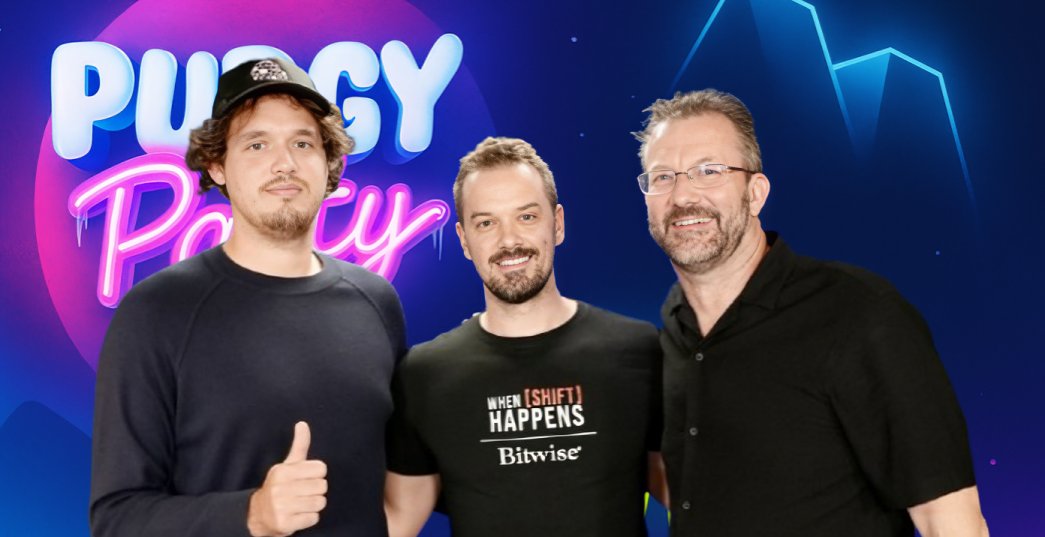Great insights from the two 🐐’s @johnwastaken and @LucaNetz on viral launches that define culture!
@PlayNFLRivals was a success, then we built @FIFARivals (1M+ downloads) to continue to lead the way for big IPs in gaming.
Next? Multiplayer penguin fun with @PlayPudgyParty 🐧
The Power Of Viral Launches — Lessons From Pudgy Penguins And FIFA Rivals, And The @Polkadot Ecosystem Formula For Hype That Actually Sustains
When a product launch goes viral, it’s tempting to treat it like a one-off miracle, like something rare, fleeting, and impossible to replicate. But two When Shift Happens guests have shown that virality can be engineered, and more importantly, sustained.
Luca Netz’s Pudgy Penguin brand and John Linden’s FIFA Rivals rollout each became cultural moments, and both hold valuable lessons for builders in the ecosystem.
Luca Netz: Turning Culture Into Distribution
Since taking over Pudgy Penguins in 2022, @LucaNetz has expanded the brand far beyond its origins as an NFT collection. Toys now sit on shelves at Walmart and Target, GIFs have racked up tens of billions of shares, and collaborations with mainstream brands have pushed @pudgypenguins well outside the crypto bubble.
Even the launch of the PENGU token — while headline-grabbing — was positioned as just one piece of a broader ecosystem that blends physical products, digital assets, and cultural touchpoints.
“Pudgy Penguin… is going to win not because it might get some big airdrop in the future,” Luca said. “It’s going to win because it’s clocking 400 million views on social, because one day you’ll open up a Happy Meal and see a big blue Pengu, because it’s tied to a brand and products people actually love.”
That mix of cultural presence and community participation has become Pudgy’s distribution strategy. The latest extension of this playbook is @PlayPudgyParty, a multiplayer game developed with Mythical Games and running on @Polkadot.
By anchoring the experience to blockchain infrastructure while keeping the front-end fun and accessible, Netz is testing whether a brand born in NFTs can thrive as a mass-market entertainment property.
John Linden: Building a Game People Keep Coming Back To
@johnwastaken, CEO of @playmythical, has already proved that sports IP can anchor a mainstream blockchain title. @PlayNFLRivals, built on @EnterTheMythos (a Polkadot parachain), became the most-played blockchain game worldwide in just 18 months, with more than six million wallets and secondary trading driving the majority of its revenue.
It wasn’t without challenges — Linden admits balancing returning players’ collections with new-season content was a “B minus” in year two — but the learnings set up the foundation for its next phase.
With @FIFARivals, Linden applied those lessons on a much bigger stage. In just six weeks, the game topped a million downloads and reached number one in multiple app stores. Player reviews reflected that momentum:
“Right now we’re sitting at 4.8 stars on Android… players are playing for longer and coming back more often,” Linden said. “For me, success is seeing this game in the hands of hundreds of millions of players and having countries where it becomes the national game.”
Rather than lean on novelty, FIFA Rivals emphasized easy-to-learn gameplay with blockchain woven in through ownership and marketplace features like QuickTrade.
The pacing was deliberate, rolling out features in waves to give early adopters reasons to stick around while creating natural entry points for new players. It’s a strategy that shows the throughline from NFL to FIFA: the hype of a viral launch is only valuable if it converts into retention, and retention only lasts if the game itself holds up.
How Polkadot Supports the Scale
Pengu, NFL Rivals, and FIFA Rivals all highlight the same truth: a viral launch only matters if there’s a system strong enough to carry the momentum forward. That’s where Polkadot’s role becomes clear.
On one side, FIFA Rivals runs on Mythos, a Polkadot parachain, benefiting from shared security and the flexibility to evolve without breaking the player experience. On the other, Pudgy Penguins’ newest venture, Pudgy Party, also taps into Polkadot to make in-game ownership seamless — items are tradable and blockchain-backed, but without adding friction for players.
As Luca Netz and John Linden both showed, virality isn’t about going big once. Instead, it’s about layering stories, community hooks, and product updates so interest compounds over time. Infrastructure matters here, and Polkadot’s design, from interoperability to customizable parachains, gives projects a way to extend that energy into lasting ecosystems.
And the network is still evolving. Upgrades like Elastic Scaling, XCM v5, and the upcoming JAM rollup framework are built to handle surges in user demand, making sure that when the next breakout moment comes, builders have the tools to turn a launch into something enduring.
Turning Moments into Movements
Hype can spark a fire, but it’s the structure beneath that keeps it burning.
From Pengu plushies to FIFA Rivals, and from Pudgy Party to Polkadot’s upgrades, the real story is continuity: how ecosystems turn flashes of attention into platforms people return to again and again.
👉 If you enjoyed reading this excerpt, head over to When Shift Happens on YouTube or your favorite podcast platform to access the full convo.

7.67K
74
The content on this page is provided by third parties. Unless otherwise stated, OKX is not the author of the cited article(s) and does not claim any copyright in the materials. The content is provided for informational purposes only and does not represent the views of OKX. It is not intended to be an endorsement of any kind and should not be considered investment advice or a solicitation to buy or sell digital assets. To the extent generative AI is utilized to provide summaries or other information, such AI generated content may be inaccurate or inconsistent. Please read the linked article for more details and information. OKX is not responsible for content hosted on third party sites. Digital asset holdings, including stablecoins and NFTs, involve a high degree of risk and can fluctuate greatly. You should carefully consider whether trading or holding digital assets is suitable for you in light of your financial condition.


